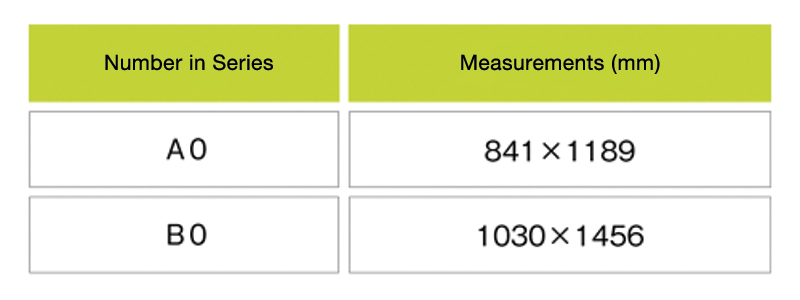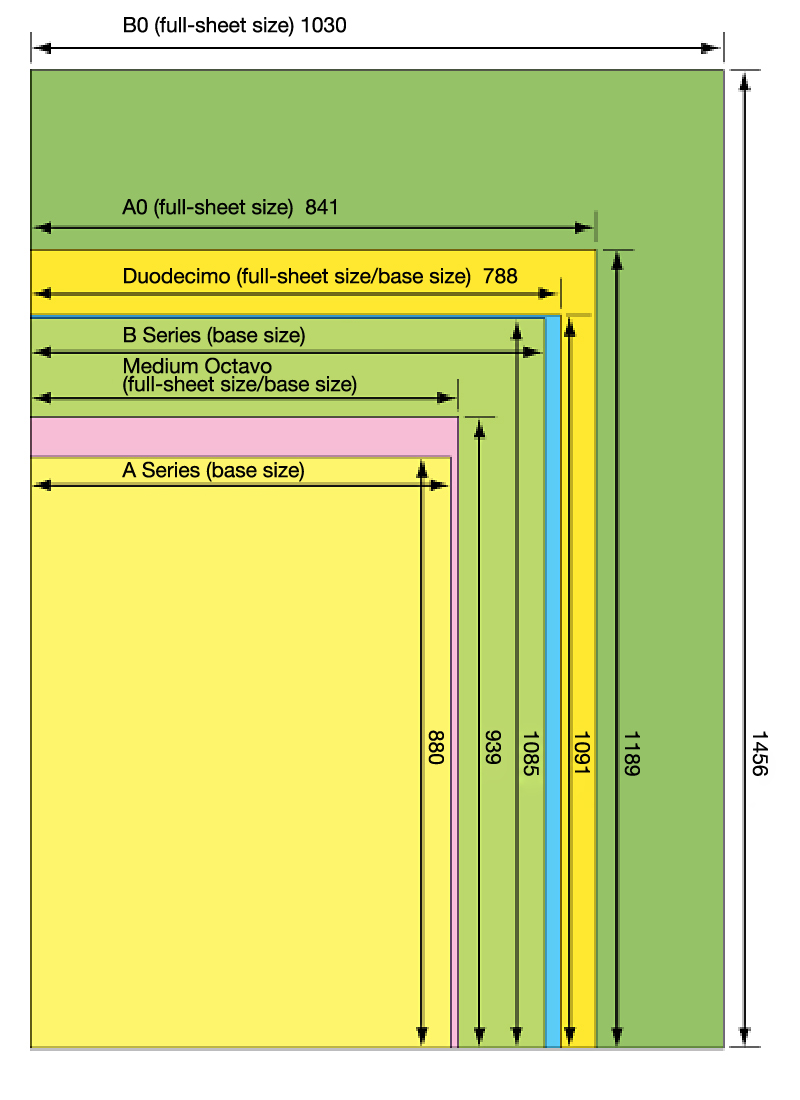Full-sheet Size
全紙サイズ
Zenshisaizu
CATEGORIES
Full-sheet size corresponds to the largest size of any of the various standard sheets of paper. In Japan, the main sizes used for photocopying and book publication are the JIS (Japanese Industrial Standard) and the ISO (International Organization for Standardization), which are generally easy to share and distribute, as well as Japanese paper (washi) sizes, which were developed in Japan and have been used for many hundreds of years.
There are two basic specifications for Western paper: untrimmed dimensions and trimmed dimensions. The untrimmed dimensions represent the size of the paper before it is cut to fit with standards and includes the A series, B series, duodecimo (shiroku-ban), medium octavo (kiku-ban), and hatoron paper types. The trimmed dimensions correspond to when the paper is cut or processed to conform to standards and consists only of the A series and B series. Western paper sheet sizes are thus generally listed as untrimmed paper. For the A and B series, however, the sizes are listed as the largest trimmed size in each series—A0 and B0, respectively.
For Japanese paper, the size of the sheet depends on the sukizu, the container in which the paper is made. Sukizu sizes vary depending on the region and the characteristics of the paper, however, which means that Japanese paper does not have fixed standard sizes as Western paper does. If the paper is not cut to measurements called setsu and sai, any size of the paper should be counted as its full-sheet size.
- Base paper sizes (Western paper)

- Full-sheet sizes for the A and B Series

 Full-sheet sizes vs. base paper sizes: A comparison(unit: mm)
Full-sheet sizes vs. base paper sizes: A comparison(unit: mm)
